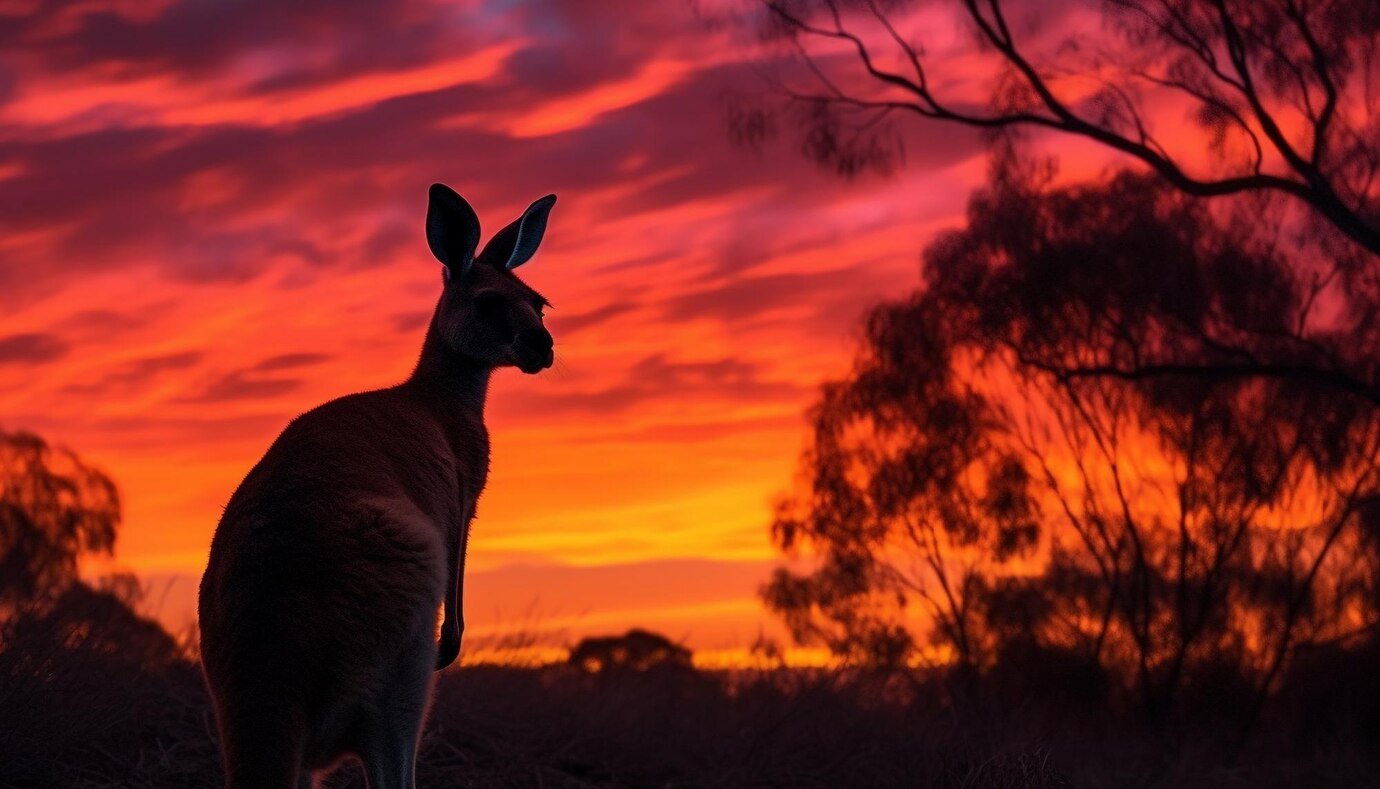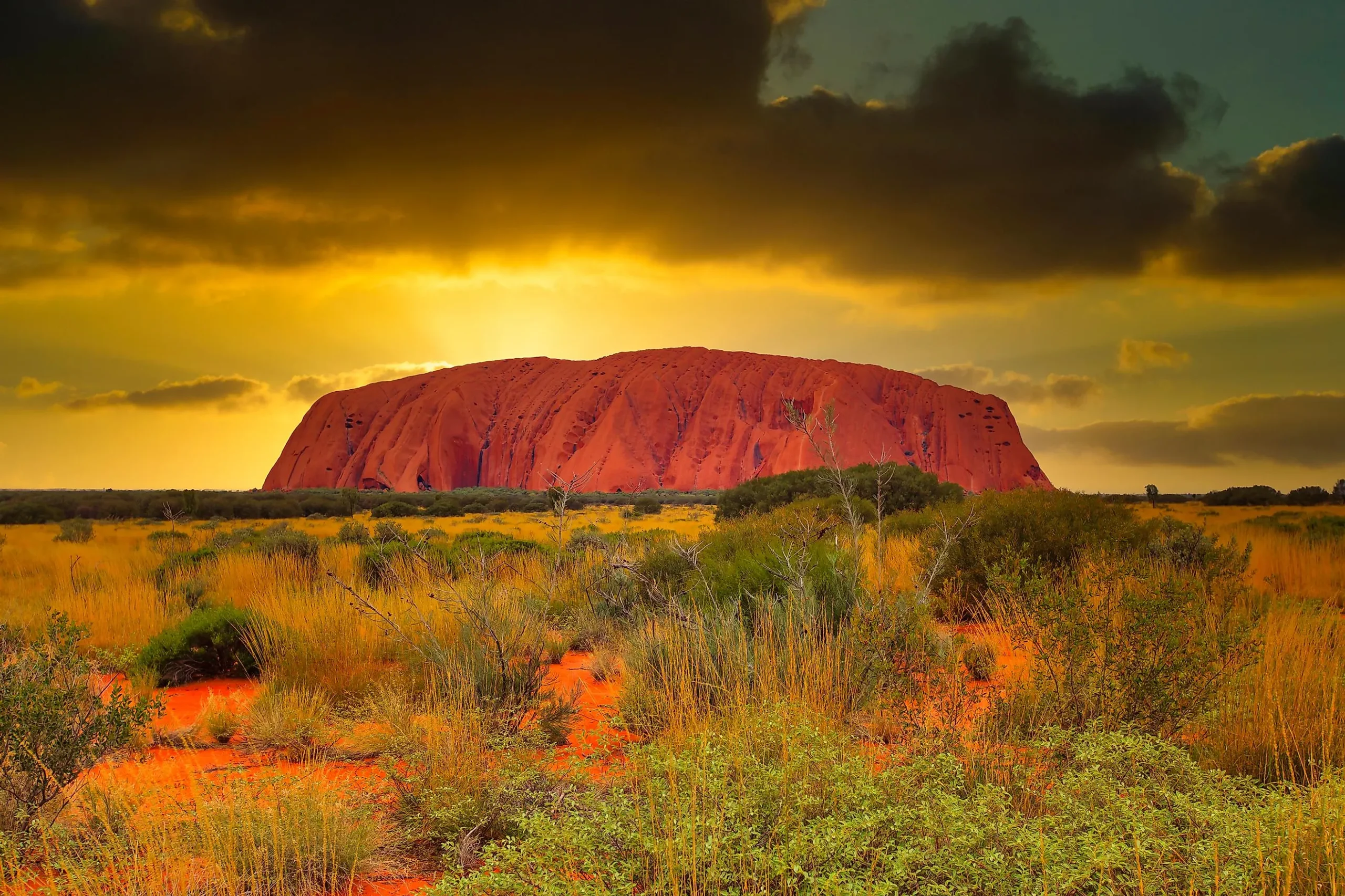Uluru-Kata Tjuta National Park: Where Ancient Wonders Meet Modern Majesty
Uluru-Kata Tjuta National Park, nestled in the vastness of Australia’s Red Centre, is more than just a stunning landscape. It’s a place where ancient wisdom whispers on the wind, where the earth thrums with stories of creation, and where nature’s raw beauty takes your breath away. Buckle up, because we’re embarking on a virtual journey to this awe-inspiring UNESCO World Heritage Site.
A Landscape Painted in Red Sands and Ancient Rock
Imagine a fiery red monolith rising from a desert plain, its surface etched with the stories of millennia. This is Uluru, the star attraction of the park. Uluru, also known as Ayers Rock, is the world’s largest sandstone monolith, and its colors shift dramatically throughout the day. At sunrise, it glows a fiery orange, while at sunset, it transforms into a deep, bruised purple. Kata Tjuta, a group of 36 giant domes that rise to the west of Uluru, complements this majestic vista. These conglomerate rock formations, also known as The Olgas, add another layer of wonder to the already breathtaking scenery.

A Place Steeped in Aboriginal Culture
Uluru-Kata Tjuta National Park is not just a geological marvel; it’s a place of immense cultural significance. The park is the traditional home of the Anangu people, who have lived here for over 30,000 years. Their connection to the land is profound, and their Tjukurpa creation stories are woven into the very fabric of the landscape. You’ll see evidence of their culture in the rock art scattered throughout the park, silent testaments to a rich and enduring heritage.
Experiencing the Park: Beyond the Photo Op
Uluru-Kata Tjuta National Park offers more than just a photo opportunity. Here are some ways to truly immerse yourself in its magic:
- Walks and Hikes: Lace up your boots and explore the park on foot. The base walk around Uluru is a must-do, offering stunning views from every angle. For a more challenging hike, tackle the Walpa Gorge walk at Kata Tjuta, which takes you through a dramatic canyon filled with ancient rock formations.
- Cultural Experiences: Delve deeper into Anangu culture at the Uluru-Kata Tjuta Cultural Centre. Here, you can learn about Tjukurpa stories, watch traditional dance performances, and gain a deeper appreciation for the Anangu way of life.
- Field of Light: Witness a breathtaking art installation called the Field of Light. Thousands of illuminated stems sway gently in the breeze, creating a mesmerizing spectacle against the backdrop of Uluru. This installation is a powerful reminder of the delicate balance between nature and human creativity.
Respectful Tourism: A Shared Responsibility
The Anangu people ask visitors to treat Uluru and Kata Tjuta with respect. Climbing Uluru is not encouraged, as it is a sacred site. Photography is permitted in most areas, but be mindful of areas that are culturally significant. By following these guidelines, you can ensure a positive and respectful experience for yourself and future generations.

Uluru-Kata Tjuta National Park: An Unforgettable Encounter
A visit to Uluru-Kata Tjuta National Park is more than just a trip; it’s a journey into the heart of Australia. It’s a chance to connect with nature’s raw beauty, learn about an ancient culture, and create memories that will last a lifetime. So, pack your bags, embrace your sense of adventure, and get ready to be amazed by this truly extraordinary place.





